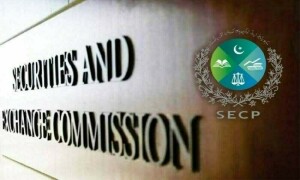Resilient or not, the year FY24proved more than tough for the automobile industry that struggled from start to finish. After reaching the highest volumes ever achieved in FY22, industry sales have dwindled. Volumes shrank 54 percent in FY23, and they have now shrunk 18 percent in FY24 year on year. Compared to now from the peak only two years ago, total volumes are down 63 percent. At slightly above the 100,000-mark, total cars sold in FY24 are lowest in 15 years. But why not?
Nearly all demand dampeners have been up, starting from SBP’s tightened monetary policy that made cost of car loans pricier. Couple that with cars that have become that much more expensive to purchase from two years. Inflation and higher taxes have meanwhile reduced purchasing ability of customers. SBP’s regulatory controls over car financing had also hardened since the economic slump began. If nothing else, that alone kept imports in check, only to be reinforced later by the shortage of parts brought about by the LC crisis. So ensued non-production days across automobile factories that suppressed supply, even if there was demand. This happened throughout FY23, only for demand to tumble as supply got restored.
The two areas where the industry may have performed marginally well is at the lowest end where Suzuki Alto exists and the highest end where new introductions like Sazgar’s Haval or Hyundai’s Tucson or Porter still continued to sell. There is a market for these cars—albeit small in the case of the SUV/LCV category—and even in times of economic hardships, these demand pockets are being tapped.
Alto has likely also retained demand because it is the cheapest vehicle in the passenger car segment that also gives an excellent fuel average. For commercial purposes—to put their cars toward the ride-sharing economy—Alto remains the best option in the locally assembled mix. There may also be the case of urban car buyers that are selling off their poor fuel average bigger cars to purchase smaller vehicles like the Alto that is lighter on the wallet when daily commute and expensive fuel are involved. Alto also happens to be the choice of vehicle for the first corporate car that many employees get upon promotion—what used to be Mehran back in the day—which has helped sustained its volumes.
This is why in FY24, despite unaffordable auto financing, more than 35,000 Altos were sold during the year, slightly more than last year.
The same cannot be said about other passenger cars. Only 82,000 units were sold during FY24—44 percent of which, mind you, came from Alto. Volumes for Swift, Wagon-R and Cultus dwindled a lot more indicating a demand that has near disappeared in this whole kerfuffle. There is something to be said about to folks that ask why Pakistani automobile assemblers don’t manufacture more small cars. Because, even if there is latent demand, these cars are so expensive they are simply beyond the purchasing power of an average car seeker specially in times of economic hardship when interest rates are high and basic consumption takes precedence over a large purchase. That’s a demand perspective. From a manufacturer’s point of view, small cars make less money, lesser still when the economy is tanking. Compare Suzuki’s staggering losses last year to Sazgar’s growing profitability upon the introduction of Haval. Fortune favors the big and bold.
Nevertheless, FY25 may not be any less challenging, though demand may improve when cost of financing reduces.

























Comments
Comments are closed.